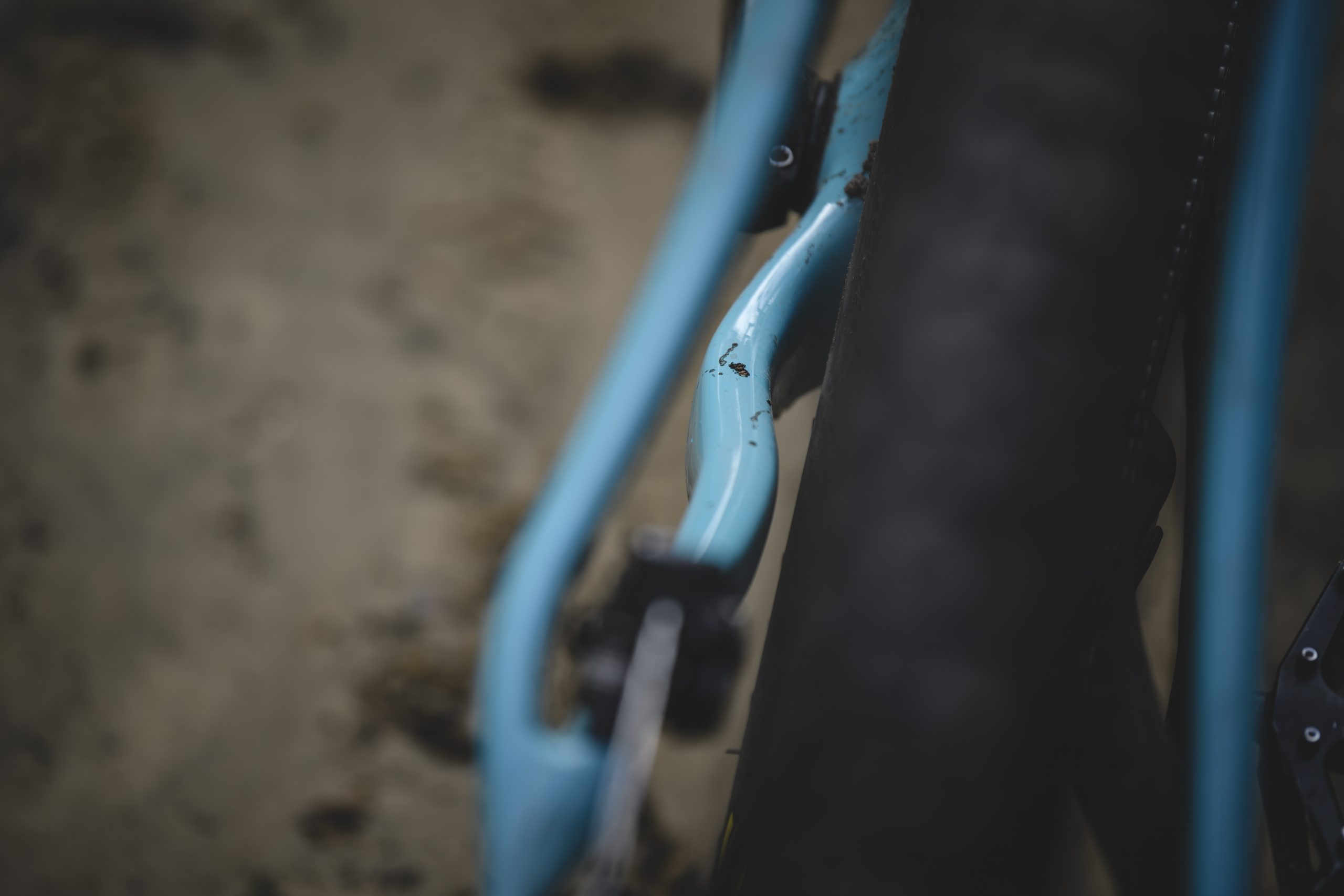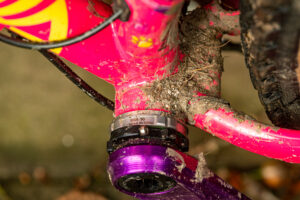Yeti's latest hardtail reimagines one of its retro classics for the modern era. If only the pricing was retro too...
Yeti ARC T1: first ride review
With its latest hardtail – the Yeti ARC T1 – this iconic brand reimagines one of its retro classics for the modern era. If only the pricing was retro too…
Read more: Best XC race bikes – hardtail and full suspension
Yeti ARC T1 need to know
- The modern reimagining of Yeti’s iconic ARC hardtail
- Slack carbon frame is combined with a trail focussed 130mm suspension fork up front
- Full 12-speed Shimano XT drivetrain and brakes provide no nonsense reliability
- 29” diameter wheels roll on aggressive large volume 2.6” Maxxis rubber
Who didn’t drool after a Yeti ARC back in the day? Its purposeful, chunky front triangle and those achingly cool, one-piece seat and chainstays with their smooth radius at the dropouts. It was the iconic hardtail that could lend itself to any discipline and has been raced in every discipline from cross-country to 4X and downhill. It was the bike that riders of my generation all dreamed of owning.

Old vs new: Which would you choose?
Fast forward to 2020 and Yeti has recreated the legend, but this time it’s different. The new ARC has a new focus, one that melds modern trail geometry with a light and highly sophisticated carbon frame. It’s Yeti’s realisation of what a hardcore hardtail should be; slack, low and a hell of a lot of fun.

Even in size large, there’s plenty of room to throw the ARC around
The new TURQ carbon frame shows that hardtail thinking has come a long way since the original ARC, in fact it’s really only the name that the two frames share in common. Our large test bike came with some decent, if not ground-breaking, numbers. It doesn’t quite mirror the Yeti SB130 – its full-suspension cousin – but it’s pretty close. Talking angles, the 66.7° head angle is pretty safe for a modern hardtail, but considering this is intended to be ridden uphill as much as being smashed downhill it sits perfectly within the remit of the ARC. The movement towards steeper seat angles is mirrored in the ARC and is even more noticeable on a hardtail. A full-suspension bike will sag more when climbing as your weight shifts rearward, but on a hardtail that doesn’t happen, and the Yeti kept me planted in a position that felt dead centre between the wheels. On paper the 465mm reach on paper seems reasonable for a size large, but at 6ft 1in with limbs like a gibbon, I could easily upsize to an XL (490mm reach) and not feel too stretched when seated.

Clean cable routing keeps rattles at bay
Two things that really do help develop the playful nature of the ARC are the low bottom bracket height and the short back end. They keep the weight low for a deliciously planted feeling of being really in the bike when railing corners, and those tight chainstays make it handle like a whippet after a hare.

Sideways is often forwards on the ARC
Yeti has created the ARC frame with a few decent features, going some way towards justifying the Gucci price tag. Besides the trail-centric geometry, the ARC is built around running a 130mm fork. A travel amount Yeti thinks is the Goldilocks number for a trail hardtail, and I’m in complete agreement. Running a longer fork, whilst being super fun on the downs, can make everyday trail riding a little too much like a chore, especially if like me you like to push it a bit on the climbs, and cause the geometry to vary considerably when, for example, braking into tight turns.

Rubber chainstay protector works well
Internal cable routing is almost obligatory on a carbon frame and the ARC’s sculpted lines are kept clean and clutter-free by entry and exit ports that clamp the cables for a silent ride. The chunky chainstay protector also works well, keeping the bike silent and the only noise coming from my knees and ankles.
ISCG 05 mounts indicate some of the directions Yeti intend this bike going but it’s disappointing to see it persisting with a press fit bottom bracket shell while most new bikes are moving back to a more service-friendly threaded unit.
Even in the large frame size the standover is ridiculously good. The low slung top tube makes it feel more like a BMX than a mountain bike. This also allows the ARC to be run with a proper length dropper, up to 200mm, although our complete test bike has been specced with a 175mm Fox Transfer dropper post.

Snaking stays give clearance to the plump 2.6in tyres
The rest of the build kit on this T1 version is based around Shimano’s 12-speed XT groupset, a solid set of DT Swiss XM1700 wheels and Maxxis 2.6in tyres – Minion DHF up front and Rekon in the rear. It’s a build that doesn’t set the world alight or inspire lust but does provide a day-in-day-out level of performance and reliability. The only component that goes some way to actually justifying the price tag is the Factory level Fox 34, but even this is the slightly cheaper FIT4 damper version, not the costlier GRIP2.

The ARC rarely leaves you all at sea on the trail
How it rides
It’s always hard to comment on the ride quality of a hardtail without it sounding like a compromise from riding full-suspension, and granted I felt myself going down the same route on my first outing on the Yeti ARC T1. But what the ARC delivers is a ride that seems to straddle the border between hardtail promises and full-suspension delivery. And this is all without doubt down to just how damn good the frame is in terms of geometry, tube shape and stiffness. Pedal up a climb and you are in no doubt that you’re riding a hardtail. The power delivery and low weight of the package just helps you channel all your effort into the task in hand, helped no end by the steep seat tube.

Who can resist channelling their inner Tomac aboard the modern day ARC?
Hit a descent and the riding position the Yeti ARC T1 puts you in makes you forget you’re on a hardtail as you start building speed and attacking the trail. It put a grin on my face almost as quickly as I hit the realisation that I was dropping into trails at a speed I would normally reserve for a 150mm travel full-sus. But rather than finding the natural limiter a hardtail often provides when attempting a slightly inappropriate line, the ARC tends to accommodate and forgive a little more. Of course it’s still going to give you a bloody good wake up call when you push it too far, and I found this out riding the techy, rooty and rocky trails on South Wales’ steep-sided valleys.

Even heels down, the ARC will keep you on your toes
But the handling is sublime. The low-slung frame and snappy back end makes it easy to whip around and almost jack-knife. Take on a drop and the Yeti ARC T1 doesn’t give you the typical ankle snapping landing, it just feels solid and planted – praise to the compliance of the carbon and 2.6in tyres. Get to the bottom of a three minute run and your feet are aching, as it just feels better to ride the ARC at attack speeds and smash through the roots and chatter.
Verdict
If you’re looking for a hardtail that can really compliment your usual full-suspension machine and one that can still be ridden hard and loose then the Yeti ARC might just be the bike able to fill the gap in your quiver. If you can get past the price that is.
















